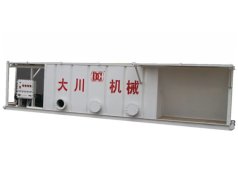Understanding Explosion-Proof Motors A Comprehensive Overview
In today’s industrial landscape, safety is paramount, particularly in environments where flammable gases, vapors, or dust may be present. This is where explosion-proof motors play a critical role. These specialized electric motors are designed to operate in hazardous conditions, ensuring both operational efficiency and safety in facilities such as oil refineries, chemical plants, and mining operations. In this article, we will explore the fundamental aspects of explosion-proof motors, including their design, types, applications, and the standards governing their use.
What is an Explosion-Proof Motor?
An explosion-proof motor is defined as an electric motor that can withstand an internal explosion without allowing the ignition of flammable materials in the surrounding environment. Unlike standard motors, which can become hazardous when exposed to volatile substances, explosion-proof motors are meticulously engineered to mitigate the risk of ignition. They typically feature robust enclosures made from durable materials, designed to contain any explosion and prevent it from propagating outside the motor.
Key Features and Design
The design of explosion-proof motors includes several critical features
1. Robust Enclosure The outer casing is constructed from materials such as cast iron or aluminum and is sealed tightly to prevent the ingress of dust and moisture, which could lead to failures.
2. Pressure Relief Explosion-proof motors are equipped with pressure-relief mechanisms to allow gases to escape without leading to catastrophic failure.
3. Insulation Special insulating materials are used to reduce the risk of electrical sparks that could ignite flammable substances.
4. Cooling Systems These motors often employ effective heat dissipation techniques to avoid overheating, which could also trigger an explosion.
Types of Explosion-Proof Motors
Explosion-proof motors can be categorized based on their design and application
1. Totally Enclosed Fan-Cooled (TEFC) These motors are totally enclosed and cooled by an external fan, making them suitable for a variety of environments while ensuring that no external materials can enter.
explosion proof motor
2. Open Drip-Proof (ODP) While not completely sealed, ODP motors are designed to allow minimal exposure to dust and moisture. They have a lower level of protection compared to TEFC motors.
3. Increased Safety (Ex e) These motors reduce the risk of explosions by ensuring that surfaces do not reach high temperatures and that sparks cannot occur.
4. Flameproof (Ex d) This designation implies that the motor\'s enclosure can withstand internal explosions and prevent the flame or gas from escaping.
Applications
Explosion-proof motors are vital in various industries
- Oil and Gas These motors are crucial in drilling rigs, refineries, and transportation facilities where flammable vapors are prevalent.
- Chemical Processing In chemical plants, explosion-proof motors are used to drive pumps, mixers, and compressors, where chemical reactions might release hazardous substances.
- Mining In underground mining operations, explosion-proof motors ensure the safe operation of equipment in environments where methane gas may accumulate.
- Cement and Dust-Heavy Industries Facilities that handle combustible dust require explosion-proof motors to minimize ignition risks.
Standards and Regulations
The design and usage of explosion-proof motors are governed by various international standards, which ensure safety and reliability. Organizations such as the National Fire Protection Association (NFPA) and the International Electrotechnical Commission (IEC) provide guidelines for the classification of hazardous areas and the corresponding motor specifications. Compliance with these standards is mandatory, ensuring that equipment can safely operate within designated environments.
Conclusion
In conclusion, explosion-proof motors play an essential role in ensuring safety in hazardous environments. By understanding their design, applications, and the standards that guide their use, industries can better protect their workers and facilities from the risks associated with explosive atmospheres. As technology continues to evolve, the development of more advanced explosion-proof motors will enhance both safety and operational efficiency, providing peace of mind for industrial operations across the globe.
 Linear Motion Shale Shaker In Drilling Rig
Linear Motion Shale Shaker In Drilling Rig  Oilfield Mud Cleaner
Oilfield Mud Cleaner  Drilling Fluid Decanter Centrifuge
Drilling Fluid Decanter Centrifuge  Drilling Mud Desander
Drilling Mud Desander  Hydrocyclone Desilter
Hydrocyclone Desilter  Centrifugal Pump/Centrifugal Mud Pump
Centrifugal Pump/Centrifugal Mud Pump  Shear Pump
Shear Pump  Jet Mud Mixer
Jet Mud Mixer  Horizontal Mud Agitator
Horizontal Mud Agitator  Constant Pressure Drilling Fluid Mud Gas Separator
Constant Pressure Drilling Fluid Mud Gas Separator  Mud Gun
Mud Gun  Mud Tank
Mud Tank  Solids Control System Vacuum Degasser
Solids Control System Vacuum Degasser  Flare Ignition Device
Flare Ignition Device  Diesel Tank
Diesel Tank  Submersible Slurry Pump
Submersible Slurry Pump 






































